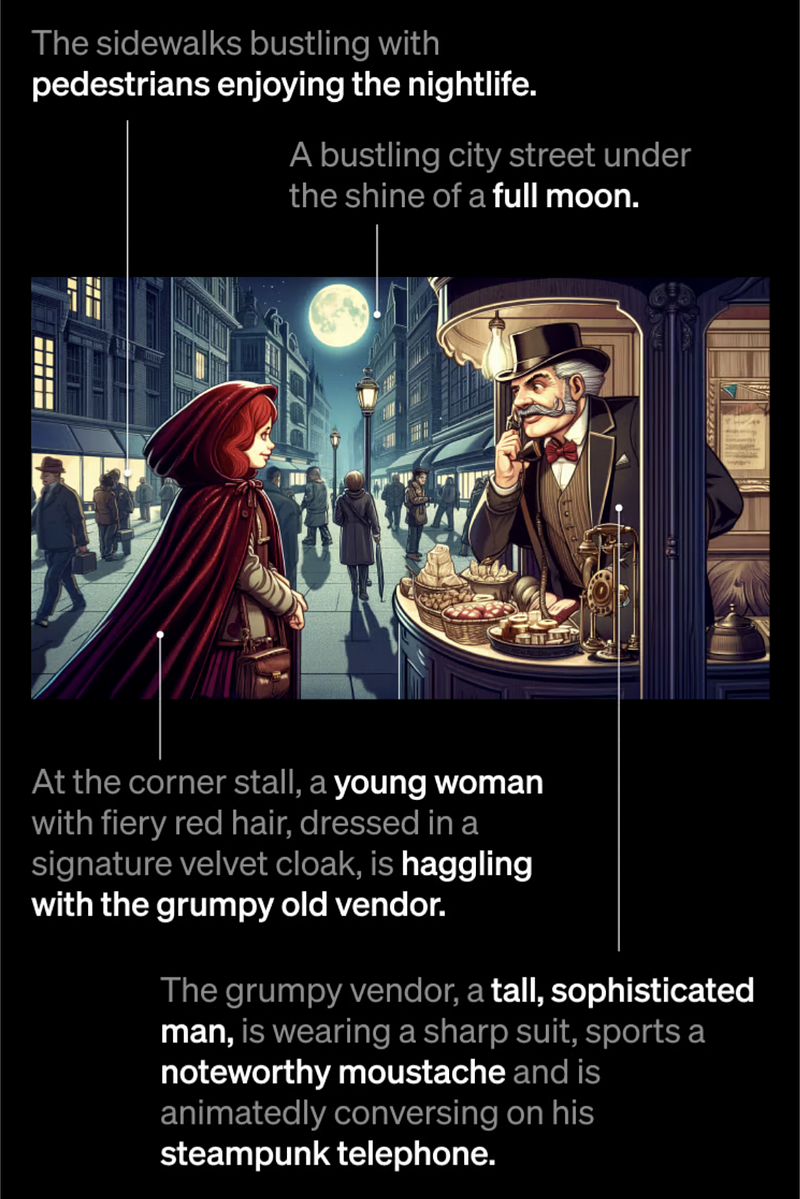# DALL-E 3: A New Era for AI Art Generation
Written on
Chapter 1: Introduction to DALL-E 3
OpenAI has recently made headlines with the launch of DALL-E 3, a significant advancement in AI-generated imagery. This development is noteworthy for several reasons.
First, OpenAI possesses ample resources to compete with tech giants like Google while also innovating in image generation. Second, the quality of AI-generated images has improved markedly. Whether it outperforms competitors like Midjourney remains to be seen, but the capabilities of the systems have certainly evolved. Lastly, if OpenAI's claims about the model's proficiency are accurate, the era of prompt engineering for AI-generated art may be coming to a close.
Before diving deeper, let’s explore what OpenAI has to say about DALL-E 3.
Section 1.1: Capabilities of DALL-E 3
According to OpenAI, “DALL·E 3 comprehends far more nuances and intricacies than our previous models, enabling you to effortlessly translate your concepts into highly precise images.” This has been a considerable limitation for earlier models, including Midjourney and Stable Diffusion, where translating a mental image into a prompt was challenging. DALL-E 3 appears to have effectively addressed this issue.
Here’s an illustrative example from OpenAI's announcement:

“DALL·E 3 can accurately depict a scene featuring specific objects and their interrelations.” Previous models struggled with this; while they excelled at generating individual characters or items, crafting scenes with complex relationships was a significant hurdle.
Sam Altman predicted that prompt engineering would be a fleeting phase in generative AI. I concurred, albeit with the caveat that it would take considerable time to refine models to the point where users wouldn’t need to articulate their ideas in a way that the AI could comprehend. It seems that for image generation, this milestone has now been reached.
This shift is lowering the barriers that previously restricted access to creating stunning images through AI, thus democratizing visual creativity.
Section 1.2: Implications for Artists
The implications for traditional artists and the broader creative community warrant discussion. On one hand, the ability to generate impressive art without needing extensive prompt engineering expertise is beneficial. For example, the popular Stable Diffusion + ControlNet style currently trending on social media is far from straightforward. On the other hand, I can’t shake the feeling that we, as a society, may be sacrificing something valuable with each advancement in this direction.
What are your thoughts on this?
Chapter 2: Additional Features of DALL-E 3
DALL-E 3 also addresses previous concerns, such as accurately rendering text within images and the depiction of complex hand structures. Currently in research preview, Plus and Enterprise users will gain access in October, followed by availability for the general public through OpenAI Labs. Like DALL-E 2, users retain ownership of the images they create, allowing for printing and commercialization.
Moreover, OpenAI has integrated DALL-E 3 with ChatGPT, enabling the latter to serve as a creative collaborator. While this isn’t a new feature, OpenAI has streamlined the process of transforming an idea into a visual representation.
Importantly, OpenAI has implemented measures to safeguard the livelihoods of living artists by prohibiting DALL-E 3 from replicating their styles, a decision that aims to foster goodwill with the artistic community and mitigate potential legal disputes. Artists can also opt-out of having their works included in the training of future image generation models.
Thus, DALL-E 3 emerges as an unexpected and exciting development in the world of AI art.
The first video titled "Did OpenAI Just KILL Prompt Engineering" provides insights into the implications of this new technology.
The second video, "Prompt Engineer Tries: DALL·E 3 (Epic Results!!)" showcases the capabilities of DALL-E 3 in action.
This article is an excerpt from The Algorithmic Bridge, a newsletter designed to help individuals navigate the intersection of AI, algorithms, and their everyday lives. Thank you for being part of our community! Don’t forget to clap and follow the author! You can discover more content at PlainEnglish.io, and we invite you to sign up for our free weekly newsletter. Follow us on Twitter (X), LinkedIn, YouTube, and Discord.